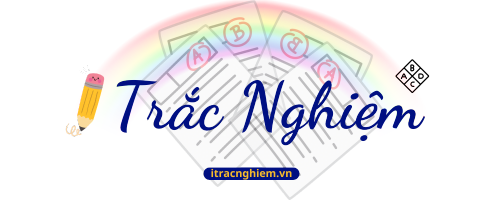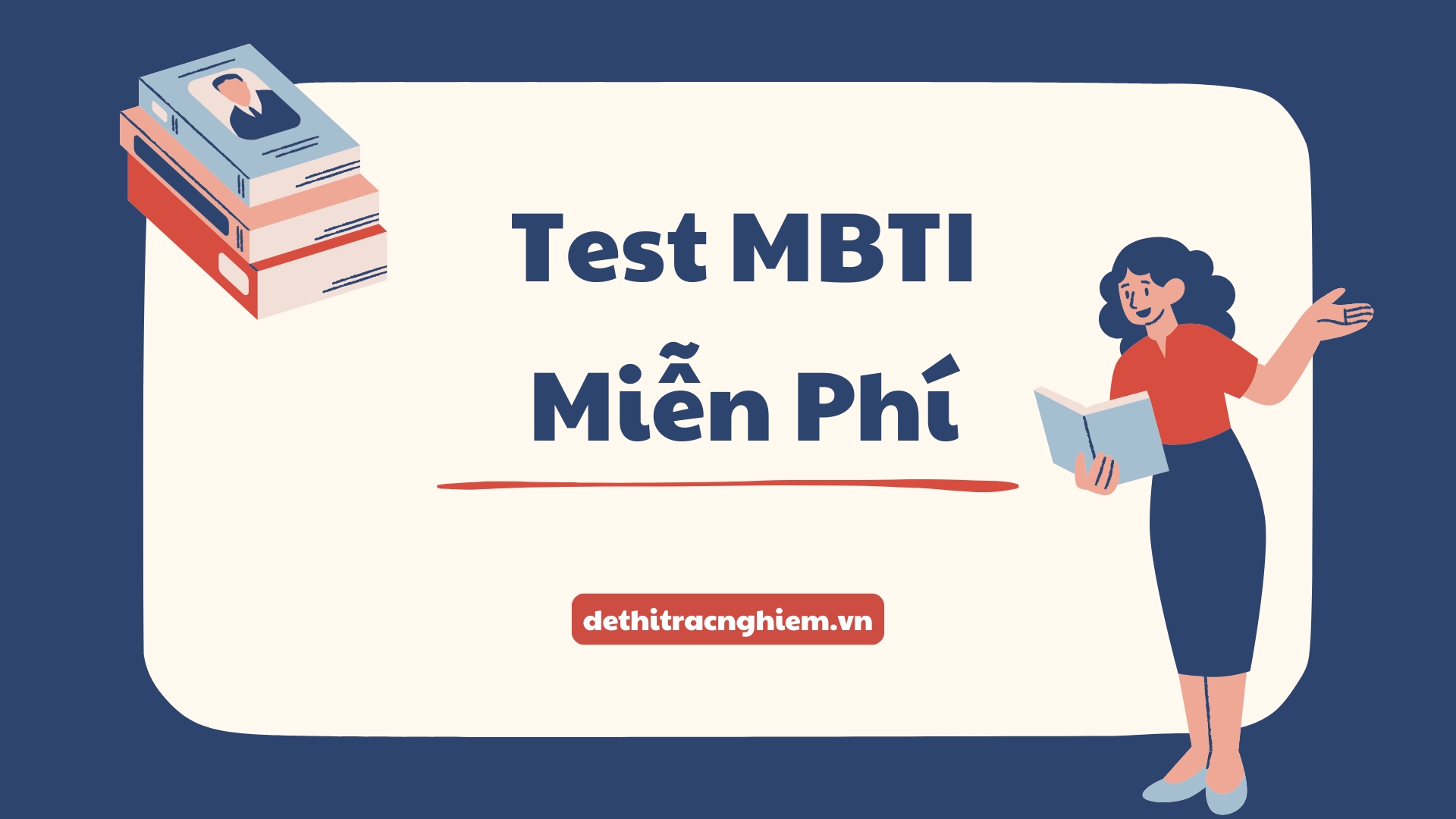Đề thi thử Đại học 2025 môn Tiếng Anh – Cụm Liên trường THPT Hải Dương là một trong những đề tiêu biểu thuộc Tổng hợp đề thi thử môn Tiếng Anh THPT QG, nằm trong chương trình Đề thi vào Đại học. Đây là đề thi được xây dựng sát với định hướng ra đề mới nhất của Bộ GD&ĐT, phù hợp với cấu trúc đề thi tốt nghiệp THPT môn Tiếng Anh năm 2025.
Đề thi này bao gồm đầy đủ các dạng bài quan trọng như: phát âm – trọng âm, ngữ pháp cơ bản và nâng cao, từ vựng theo chủ đề, đọc hiểu, điền từ vào đoạn văn (cloze test) và viết lại câu (sentence transformation). Đặc biệt, phần đọc hiểu và phân tích ngữ cảnh trong đề mang tính phân loại cao, đòi hỏi học sinh không chỉ nắm chắc kiến thức ngôn ngữ mà còn phải có khả năng suy luận, tổng hợp và quản lý thời gian tốt trong quá trình làm bài.
Hãy cùng Dethitracnghiem.vn khám phá ngay đề thi thử này và bắt tay vào luyện tập để sẵn sàng cho kỳ thi THPT Quốc gia sắp tới!
- Số trang: 4 trang
- Hình thức: Trắc nghiệm
- Thời gian làm bài: 50 phút (không kể thời gian phát đề)
ĐỀ THI THỬ ĐẠI HỌC MÔN TIẾNG ANH NĂM 2025 CỤM LIÊN TRƯỜNG THPT HẢI DƯƠNG
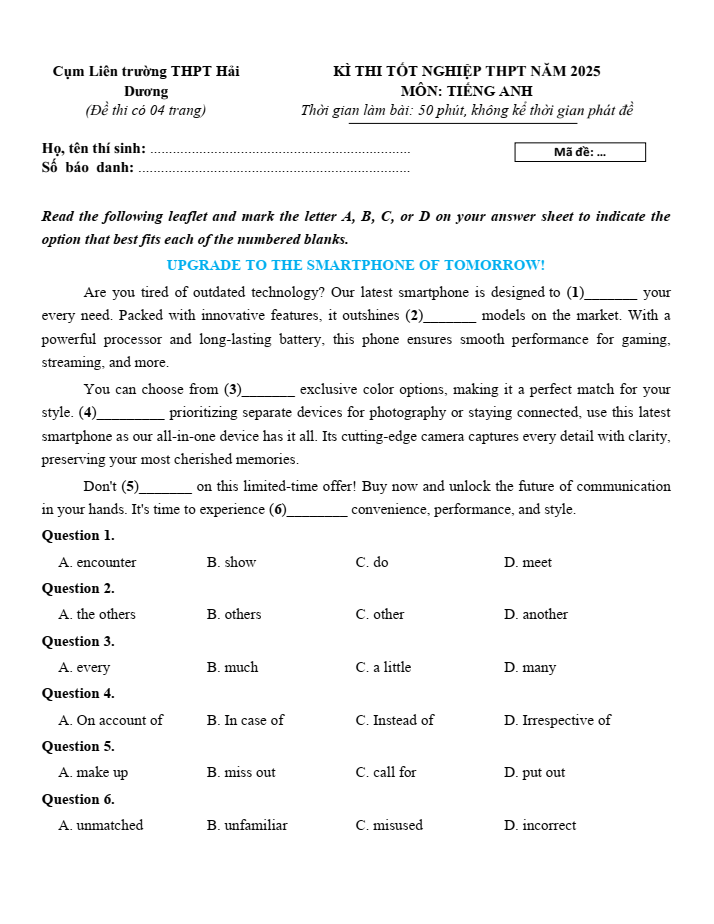
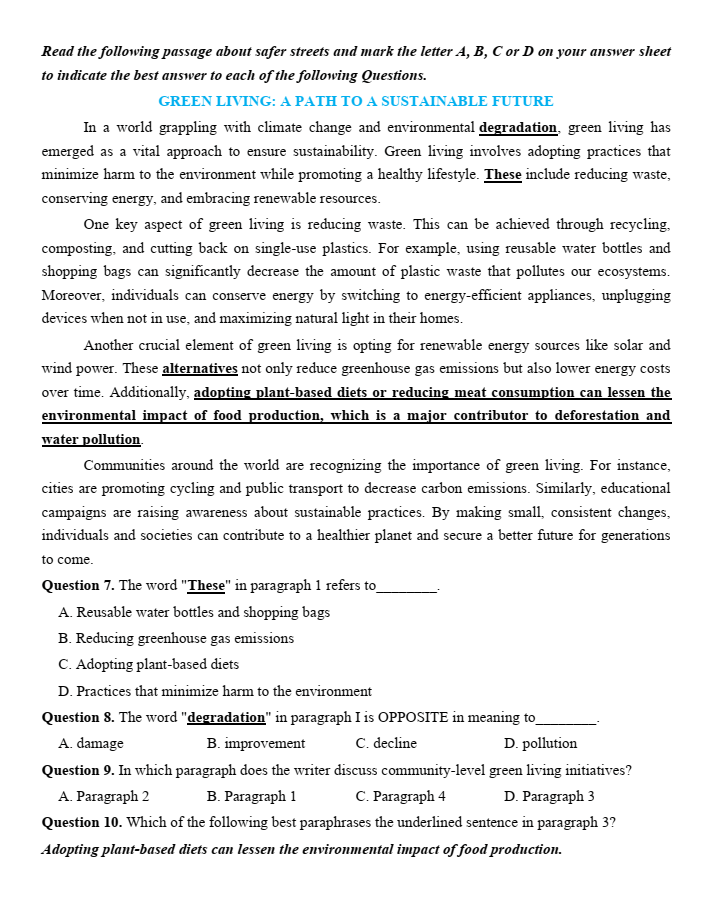
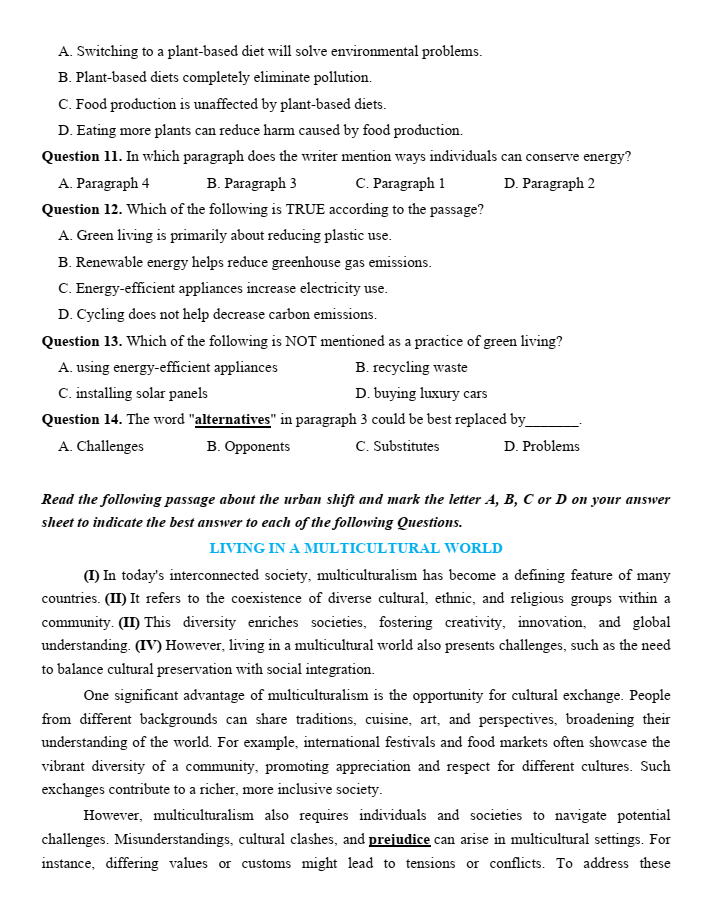
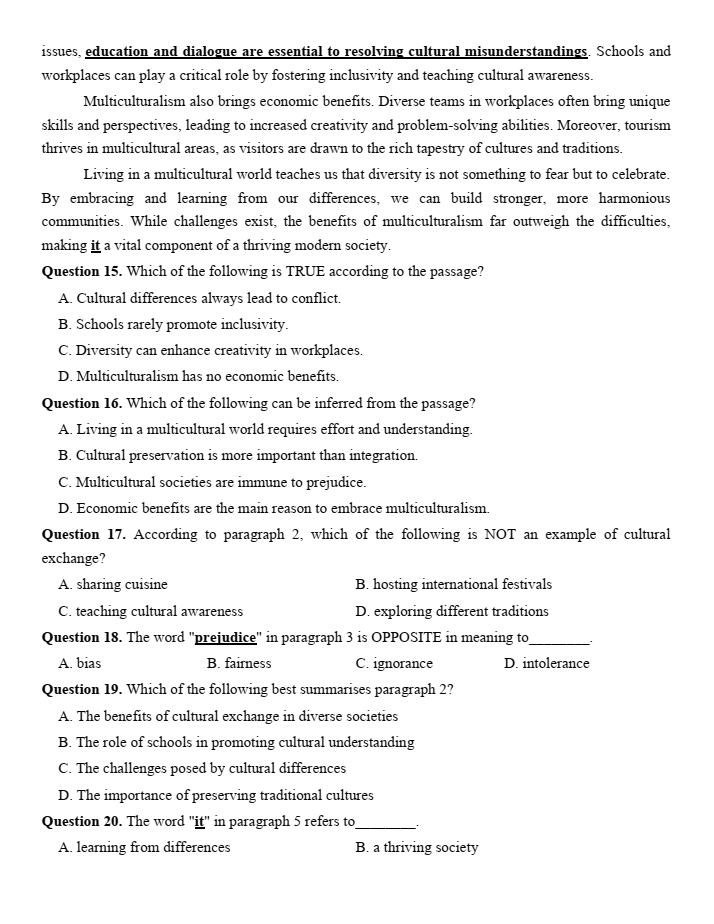
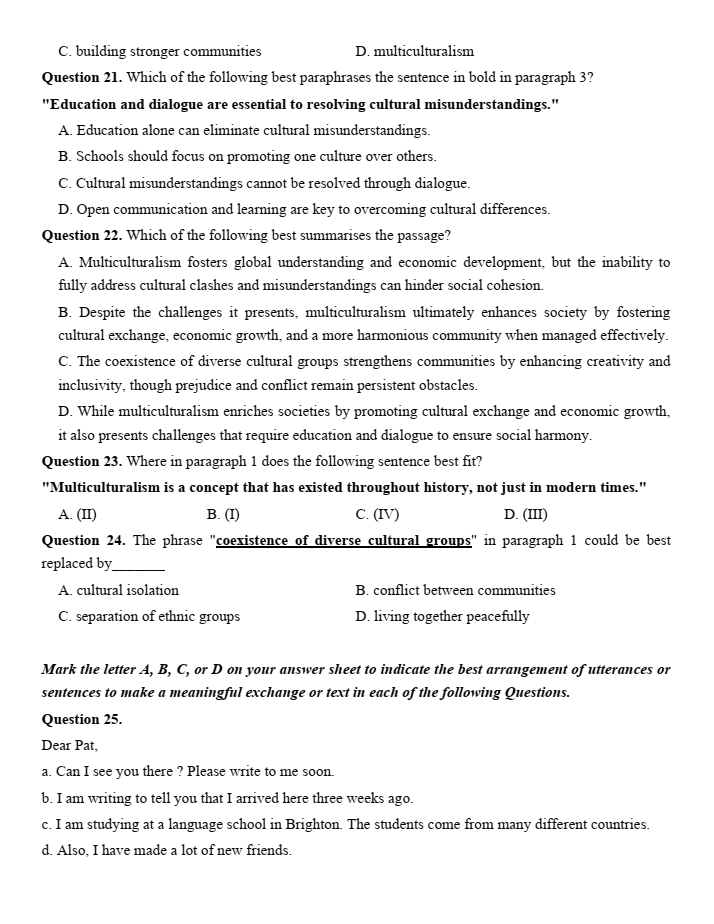
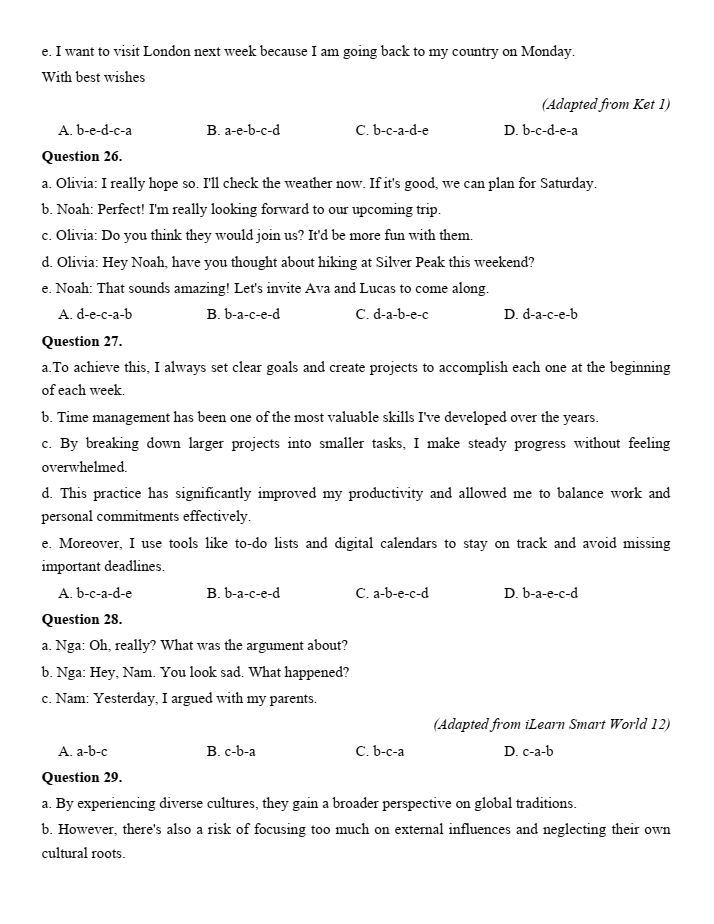
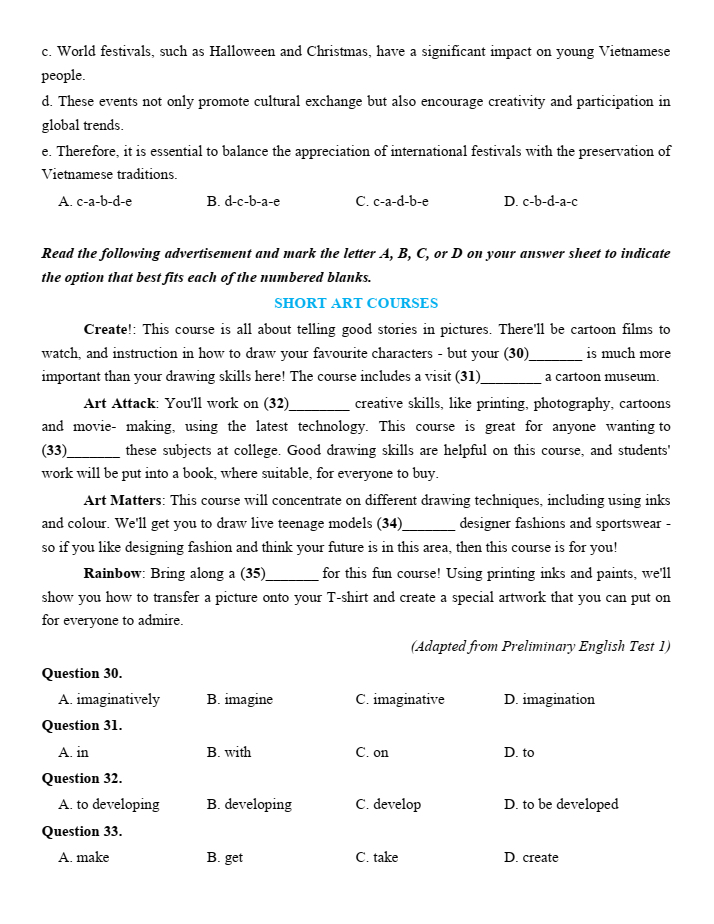
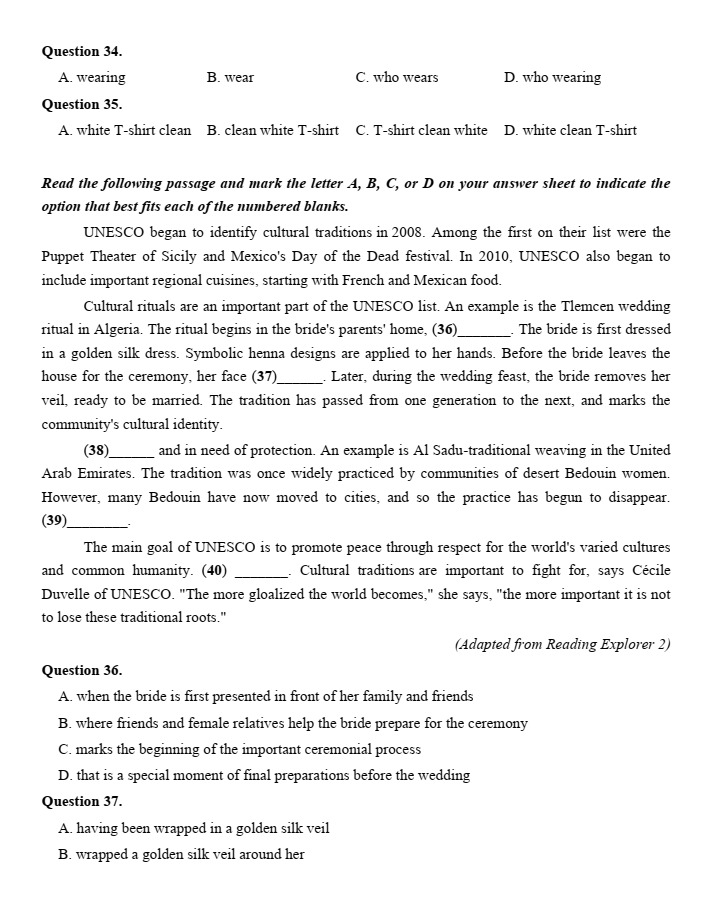
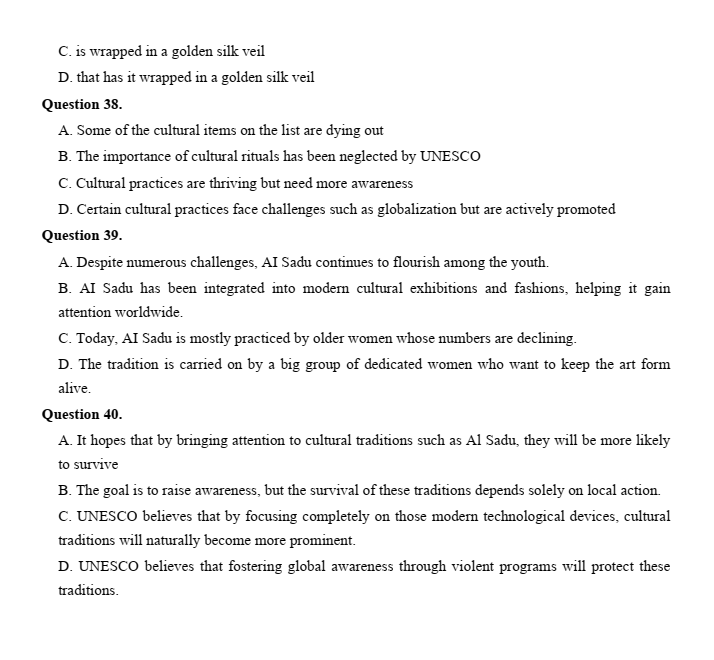
Cụm Liên trường THPT Hải Dương
(Đề thi có 04 trang)
KỲ THI TỐT NGHIỆP THPT NĂM 2025
MÔN: TIẾNG ANH
Thời gian làm bài: 50 phút, không kể thời gian phát đề
Mã đề: …
Họ, tên thí sinh: ……………………………………………………………………….
Số báo danh: ……………………………………………………………………………….
Read the following leaflet and mark the letter A, B, C, or D on your answer sheet to indicate the option that best fits each of the numbered blanks.
UPGRADE TO THE SMARTPHONE OF TOMORROW!
Are you tired of outdated technology? Our latest smartphone is designed to (1)______ your every need. Packed with innovative features, it outshines (2)______ models on the market. With a powerful processor and long-lasting battery, this phone ensures smooth performance for gaming, streaming, and more.
You can choose from (3)______ exclusive color options, making it a perfect match for your style. (4)______ prioritizing separate devices for photography or staying connected, use this latest smartphone as our all-in-one device has it all. Its cutting-edge camera captures every detail with clarity, preserving your most cherished memories.
Don’t (5)______ on this limited-time offer! Buy now and unlock the future of communication in your hands. It’s time to experience (6)______ convenience, performance, and style.
Question 1.
A. encounter
B. show
C. do
D. meet
Question 2.
A. the others
B. others
C. other
D. another
Question 3.
A. every
B. much
C. a little
D. many
Question 4.
A. On account of
B. In case of
C. Instead of
D. Irrespective of
Question 5.
A. make up
B. miss out
C. call for
D. put out
Question 6.
A. unmatched
B. unfamiliar
C. misused
D. incorrect
Read the following passage about safer streets and mark the letter A, B, C or D on your answer sheet to indicate the best answer to each of the following Questions.
GREEN LIVING: A PATH TO A SUSTAINABLE FUTURE
In a world grappling with climate change and environmental **degradation**, green living has emerged as a vital approach to ensure sustainability. Green living involves adopting practices that minimize harm to the environment while promoting a healthy lifestyle. **These** include reducing waste, conserving energy, and embracing renewable resources.
One key aspect of green living is reducing waste. This can be achieved through recycling, composting, and cutting back on single-use plastics. For example, using reusable water bottles and shopping bags can significantly decrease the amount of plastic waste that pollutes our ecosystems. Moreover, individuals can conserve energy by switching to energy-efficient appliances, unplugging devices when not in use, and maximizing natural light in their homes.
Another crucial element of green living is opting for renewable energy sources like solar and wind power. These **alternatives** not only reduce greenhouse gas emissions but also lower energy costs over time. Additionally, **adopting plant-based diets or reducing meat consumption can lessen the environmental impact of food production, which is a major contributor to deforestation and water pollution**.
Communities around the world are recognizing the importance of green living. For instance, cities are promoting cycling and public transport to decrease carbon emissions. Similarly, educational campaigns are raising awareness about sustainable practices. By making small, consistent changes, individuals and societies can contribute to a healthier planet and secure a better future for generations to come.
Question 7. The word “**These**” in paragraph 1 refers to ______.
A. Reusable water bottles and shopping bags
B. Reducing greenhouse gas emissions
C. Adopting plant-based diets
D. Practices that minimize harm to the environment
Question 8. The word “**degradation**” in paragraph I is OPPOSITE in meaning to ______.
A. damage
B. improvement
C. decline
D. pollution
Question 9. In which paragraph does the writer discuss community-level green living initiatives?
A. Paragraph 2
B. Paragraph 1
C. Paragraph 4
D. Paragraph 3
Question 10. Which of the following best paraphrases the underlined sentence in paragraph 3?
Adopting plant-based diets can lessen the environmental impact of food production.
A. Switching to a plant-based diet will solve environmental problems.
B. Plant-based diets completely eliminate pollution.
C. Food production is unaffected by plant-based diets.
D. Eating more plants can reduce harm caused by food production.
Question 11. In which paragraph does the writer mention ways individuals can conserve energy?
A. Paragraph 4
B. Paragraph 3
C. Paragraph 1
D. Paragraph 2
Question 12. Which of the following is TRUE according to the passage?
A. Green living is primarily about reducing plastic use.
B. Renewable energy helps reduce greenhouse gas emissions.
C. Energy-efficient appliances increase electricity use.
D. Cycling does not help decrease carbon emissions.
Question 13. Which of the following is NOT mentioned as a practice of green living?
A. using energy-efficient appliances
B. recycling waste
C. installing solar panels
D. buying luxury cars
Question 14. The word “**alternatives**” in paragraph 3 could be best replaced by ______.
A. Challenges
B. Opponents
C. Substitutes
D. Problems
Read the following passage about the urban shift and mark the letter A, B, C or D on your answer sheet to indicate the best answer to each of the following Questions.
LIVING IN A MULTICULTURAL WORLD
(I) In today’s interconnected society, multiculturalism has become a defining feature of many countries. (II) It refers to the **coexistence of diverse cultural, ethnic, and religious groups** within a community. (III) This diversity enriches societies, fostering creativity, innovation, and global understanding. (IV) However, living in a multicultural world also presents challenges, such as the need to balance cultural preservation with social integration.
One significant advantage of multiculturalism is the opportunity for cultural exchange. People from different backgrounds can share traditions, cuisine, art, and perspectives, broadening their understanding of the world. For example, international festivals and food markets often showcase the vibrant diversity of a community, promoting appreciation and respect for different cultures. Such exchanges contribute to a richer, more inclusive society.
However, multiculturalism also requires individuals and societies to navigate potential challenges. Misunderstandings, cultural clashes, and **prejudice** can arise in multicultural settings. For instance, differing values or customs might lead to tensions or conflicts. To address these issues, **education and dialogue are essential to resolving cultural misunderstandings**. Schools and workplaces can play a critical role by fostering inclusivity and teaching cultural awareness.
Multiculturalism also brings economic benefits. Diverse teams in workplaces often bring unique skills and perspectives, leading to increased creativity and problem-solving abilities. Moreover, tourism thrives in multicultural areas, as visitors are drawn to the rich tapestry of cultures and traditions.
Living in a multicultural world teaches us that diversity is not something to fear but to celebrate. By embracing and learning from our differences, we can build stronger, more harmonious communities. While challenges exist, the benefits of multiculturalism far outweigh the difficulties, making **it** a vital component of a thriving modern society.
Question 15. Which of the following is TRUE according to the passage?
A. Cultural differences always lead to conflict.
B. Schools rarely promote inclusivity.
C. Diversity can enhance creativity in workplaces.
D. Multiculturalism has no economic benefits.
Question 16. Which of the following can be inferred from the passage?
A. Living in a multicultural world requires effort and understanding.
B. Cultural preservation is more important than integration.
C. Multicultural societies are immune to prejudice.
D. Economic benefits are the main reason to embrace multiculturalism.
Question 17. According to paragraph 2, which of the following is NOT an example of cultural exchange?
A. sharing cuisine
B. hosting international festivals
C. teaching cultural awareness
D. exploring different traditions
Question 18. The word “**prejudice**” in paragraph 3 is OPPOSITE in meaning to ______.
A. bias
B. fairness
C. ignorance
D. intolerance
Question 19. Which of the following best summarises paragraph 2?
A. The benefits of cultural exchange in diverse societies
B. The role of schools in promoting cultural understanding
C. The challenges posed by cultural differences
D. The importance of preserving traditional cultures
Question 20. The word “**it**” in paragraph 5 refers to ______.
A. learning from differences
B. a thriving society
C. building stronger communities
D. multiculturalism
Question 21. Which of the following best paraphrases the sentence in bold in paragraph 3?
“Education and dialogue are essential to resolving cultural misunderstandings.”
A. Education alone can eliminate cultural misunderstandings.
B. Schools should focus on promoting one culture over others.
C. Cultural misunderstandings cannot be resolved through dialogue.
D. Open communication and learning are key to overcoming cultural differences.
Question 22. Which of the following best summarises the passage?
A. Multiculturalism fosters global understanding and economic development, but the inability to fully address cultural clashes and misunderstandings can hinder social cohesion.
B. Despite the challenges it presents, multiculturalism ultimately enhances society by fostering cultural exchange, economic growth, and a more harmonious community when managed effectively.
C. The coexistence of diverse cultural groups strengthens communities by enhancing creativity and inclusivity, though prejudice and conflict remain persistent obstacles.
D. While multiculturalism enriches societies by promoting cultural exchange and economic growth, it also presents challenges that require education and dialogue to ensure social harmony.
Question 23. Where in paragraph 1 does the following sentence best fit?
“Multiculturalism is a concept that has existed throughout history, not just in modern times.”
A. (II)
B. (I)
C. (IV)
D. (III)
Question 24. The phrase “**coexistence of diverse cultural groups**” in paragraph 1 could be best replaced by ______.
A. cultural isolation
B. conflict between communities
C. separation of ethnic groups
D. living together peacefully
Mark the letter A, B, C, or D on your answer sheet to indicate the best arrangement of utterances or sentences to make a meaningful exchange or text in each of the following Questions.
Question 25.
Dear Pat,
a. Can I see you there ? Please write to me soon.
b. I am writing to tell you that I arrived here three weeks ago.
c. I am studying at a language school in Brighton. The students come from many different countries.
d. Also, I have made a lot of new friends.
e. I want to visit London next week because I am going back to my country on Monday.
With best wishes
(Adapted from Ket 1)
A. b-e-d-c-a
B. a-e-b-c-d
C. b-c-a-d-e
D. b-c-d-e-a
Question 26.
a. Olivia: I really hope so. I’ll check the weather now. If it’s good, we can plan for Saturday.
b. Noah: Perfect! I’m really looking forward to our upcoming trip.
c. Olivia: Do you think they would join us? It’d be more fun with them.
d. Olivia: Hey Noah, have you thought about hiking at Silver Peak this weekend?
e. Noah: That sounds amazing! Let’s invite Ava and Lucas to come along.
A. d-e-c-a-b
B. d-a-c-e-d
C. d-a-b-e-c
D. d-a-c-e-b
Question 27.
a. To achieve this, I always set clear goals and create projects to accomplish each one at the beginning of each week.
b. Time management has been one of the most valuable skills I’ve developed over the years.
c. By breaking down larger projects into smaller tasks, I make steady progress without feeling overwhelmed.
d. This practice has significantly improved my productivity and allowed me to balance work and personal commitments effectively.
e. Moreover, I use tools like to-do lists and digital calendars to stay on track and avoid missing important deadlines.
A. b-c-a-d-e
B. b-a-c-e-d
C. a-b-e-c-d
D. b-a-e-c-d
Question 28.
a. Nga: Oh, really? What was the argument about?
b. Nga: Hey, Nam. You look sad. What happened?
c. Nam: Yesterday, I argued with my parents.
(Adapted from iLearn Smart World 12)
A. a-b-c
B. c-b-a
C. b-c-a
Question 29.
a. By experiencing diverse cultures, they gain a broader perspective on global traditions.
b. However, there’s also a risk of focusing too much on external influences and neglecting their own cultural roots.
c. World festivals, such as Halloween and Christmas, have a significant impact on young Vietnamese people.
d. These events not only promote cultural exchange but also encourage creativity and participation in global trends.
e. Therefore, it is essential to balance the appreciation of international festivals with the preservation of Vietnamese traditions.
A. c-a-b-d-e
B. d-c-b-a-e
C. c-a-d-b-e
D. c-b-d-a-c
Read the following advertisement and mark the letter A, B, C, or D on your answer sheet to indicate the option that best fits each of the numbered blanks.
SHORT ART COURSES
Create!: This course is all about telling good stories in pictures. There’ll be cartoon films to watch, and instruction in how to draw your favourite characters – but your (30)______ is much more important than your drawing skills here! The course includes a visit (31)______ a cartoon museum.
Art Attack: You’ll work on (32)______ creative skills, like printing, photography, cartoons and movie- making, using the latest technology. This course is great for anyone wanting to (33)______ these subjects at college. Good drawing skills are helpful on this course, and students’ work will be put into a book, where suitable, for everyone to buy.
Art Matters: This course will concentrate on different drawing techniques, including using inks and colour. We’ll get you to draw live teenage models (34)______ designer fashions and sportswear – so if you like designing fashion and think your future is in this area, then this course is for you!
Rainbow: Bring along a (35)______ for this fun course! Using printing inks and paints, we’ll show you how to transfer a picture onto your T-shirt and create a special artwork that you can put on for everyone to admire.
(Adapted from Preliminary English Test 1)
Question 30.
A. imaginatively
B. imagine
C. imaginative
D. imagination
Question 31.
A. in
B. with
C. on
D. to
Question 32.
A. to developing
B. developing
C. develop
D. to be developed
Question 33.
A. make
B. get
C. take
D. create
Question 34.
A. wearing
B. wear
C. who wears
D. who wearing
Question 35.
A. white T-shirt clean
B. clean white T-shirt
C. T-shirt clean white
D. white clean T-shirt
Read the following passage and mark the letter A, B, C, or D on your answer sheet to indicate the option that best fits each of the numbered blanks.
UNESCO began to identify cultural traditions in 2008. Among the first on their list were the Puppet Theater of Sicily and Mexico’s Day of the Dead festival. In 2010, UNESCO also began to include important regional cuisines, starting with French and Mexican food.
Cultural rituals are an important part of the UNESCO list. An example is the Tlemcen wedding ritual in Algeria. The ritual begins in the bride’s parents’ home. (36)______. The bride is first dressed in a golden silk dress. Symbolic henna designs are applied to her hands. Before the bride leaves the house for the ceremony, her face (37)______. Later, during the wedding feast, the bride removes her veil, ready to be married. The tradition has passed from one generation to the next, and marks the community’s cultural identity.
(38)______ and in need of protection. An example is Al Sadu-traditional weaving in the United Arab Emirates. The tradition was once widely practiced by communities of desert Bedouin women. However, many Bedouin have now moved to cities, and so the practice has begun to disappear. (39)______.
The main goal of UNESCO is to promote peace through respect for the world’s varied cultures and common humanity. (40) ______. Cultural traditions are important to fight for, says Cécile Duvelle of UNESCO. “The more gloalized the world becomes,” she says, “the more important it is not to lose these traditional roots.”
(Adapted from Reading Explorer 2)
Question 36.
A. when the bride is first presented in front of her family and friends
B. where friends and female relatives help the bride prepare for the ceremony
C. marks the beginning of the important ceremonial process
D. that is a special moment of final preparations before the wedding
Question 37.
A. having been wrapped in a golden silk veil
B. wrapped a golden silk veil around her
C. is wrapped in a golden silk veil
D. that has it wrapped in a golden silk veil
Question 38.
A. Some of the cultural items on the list are dying out
B. The importance of cultural rituals has been neglected by UNESCO
C. Cultural practices are thriving but need more awareness
D. Certain cultural practices face challenges such as globalization but are actively promoted
Question 39.
A. Despite numerous challenges, AI Sadu continues to flourish among the youth.
B. AI Sadu has been integrated into modern cultural exhibitions and fashions, helping it gain attention worldwide.
C. Today, AI Sadu is mostly practiced by older women whose numbers are declining.
D. The tradition is carried on by a big group of dedicated women who want to keep the art form alive.
Question 40.
A. It hopes that by bringing attention to cultural traditions such as Al Sadu, they will be more likely to survive
B. The goal is to raise awareness, but the survival of these traditions depends solely on local action.
C. UNESCO believes that by focusing completely on those modern technological devices, cultural traditions will naturally become more prominent.
D. UNESCO believes that fostering global awareness through violent programs will protect these traditions.
Mục đích tổ chức kỳ thi Đại học năm 2025 là gì?
Căn cứ theo quy chế hiện hành của Bộ Giáo dục và Đào tạo và các văn bản hướng dẫn tổ chức kỳ thi Đại học năm 2025, mục đích của kỳ thi là:
– Đánh giá kết quả học tập của học sinh sau 12 năm học theo yêu cầu của chương trình giáo dục phổ thông.
– Lấy kết quả thi để xét công nhận tốt nghiệp trung học phổ thông và làm căn cứ tuyển sinh đại học, cao đẳng.
– Góp phần đánh giá chất lượng giáo dục của địa phương và cả nước, làm cơ sở điều chỉnh nội dung, phương pháp dạy học trong nhà trường.
Thí sinh thi Đại học năm 2025 có bắt buộc thi môn Tiếng Anh không?
Theo quy định hiện hành của Bộ Giáo dục và Đào tạo và hướng dẫn tổ chức kỳ thi tốt nghiệp Đại học năm 2025, thí sinh dự thi phải thực hiện như sau:
– Thi 3 môn bắt buộc: Toán, Ngữ văn và Ngoại ngữ.
– Ngoài ra, thí sinh phải chọn một trong hai bài thi tổ hợp: Khoa học Tự nhiên (gồm các môn Vật lí, Hóa học, Sinh học) hoặc Khoa học Xã hội (gồm các môn Lịch sử, Địa lí, Giáo dục công dân – dành cho học sinh học chương trình giáo dục phổ thông).
Trong số các môn thi, Tiếng Anh là một trong ba môn thuộc bài thi Ngoại ngữ bắt buộc, thí sinh phải thi môn Tiếng Anh như một môn bắt buộc, không phụ thuộc vào lựa chọn bài thi tổ hợp hay mục đích xét tuyển đại học.
Như vậy, kỳ thi Đại học năm 2025 bắt buộc thí sinh phải thi môn Tiếng Anh.
